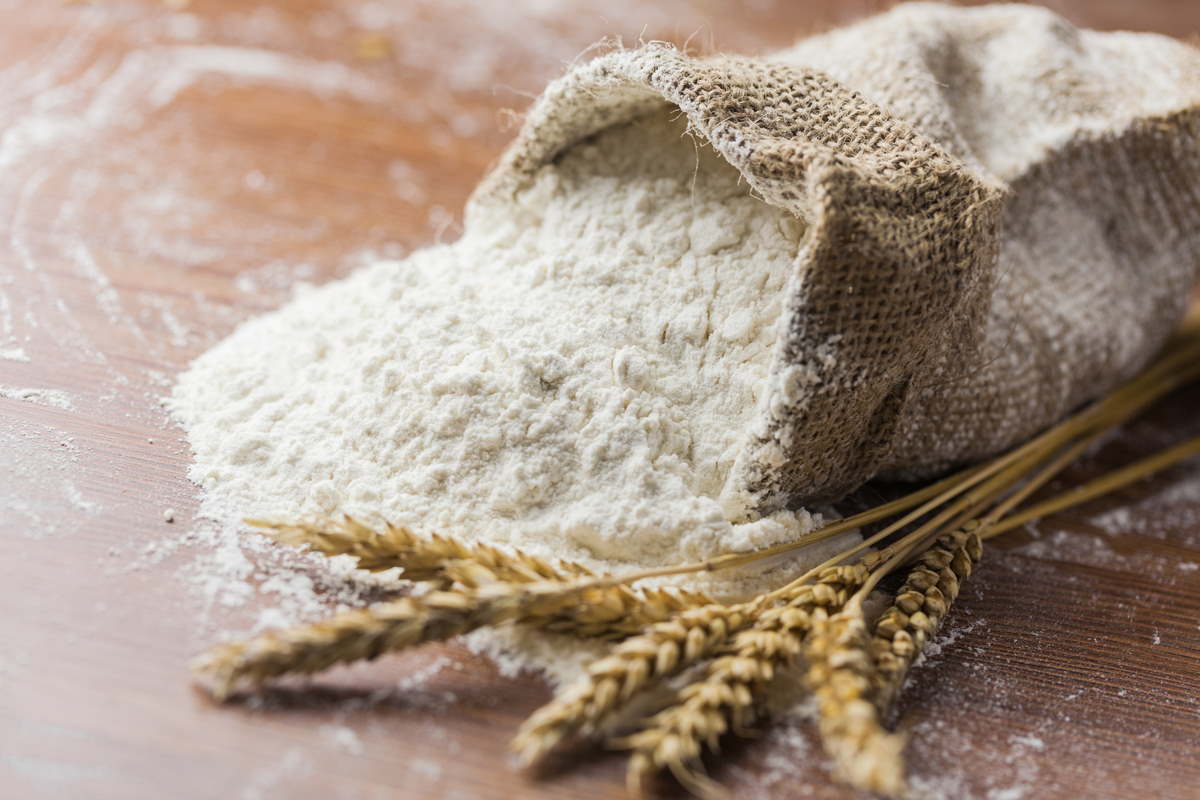Among the different types of wheat flour, there is Manitoba flour, but do we know what it is, how to use it and when it is best to avoid it? Let's find out together.
Pasta, pizza, bread, sweets, flour is one of the protagonists of an infinite number of recipes. There are different types on the market, and knowing how to recognize them will allow us to choose the right ingredient for our recipes. Among the most popular and appreciated for long leavening preparations is the Manitoba flour. Let's see together its characteristics, when to use it and how to replace it in the kitchen to obtain healthier recipes. (Read also: Wheat flours 00, 0, 1, 2 and wholemeal: let's be clear)
Manitoba flour, origin
When we talk about Manitoba flour immediately comes to mind, never the Canadian region, even if they are actually connected. In fact it is precisely in this area of North America where this type of flour was born, specifically from a soft wheat, the Triticum aestivum, which has adapted to cold areas.
The characteristic that made it so resistant to low temperatures is that it is a very protein and gluten-rich grain, therefore not suitable for celiac. This, combined with its ability to absorb a lot of water, makes the manitoba particularly strong.
So is Manitoba flour from Manitoba?
Today the word Manitoba flour continues to be used erroneously, regardless of the origin of the product, as a synonym for strong flour and not as flour from Canada. In fact, this type of resistant wheat has been slowly exported and is now present in different parts of the world.
Manitoba isn't the only one that's this strong. In Italy, for example, similar grains are grown and, with the intention of giving greater value to the use of local grains that develop as much gluten, some organic companies have decided not to use the term "Manitoba type", but to use " type 0 strong "or simply" strong flour ".
Strong flour, meaning and difference with weaker flours

Billion Photos / Shutterstock
What is special about Manitoba flour that makes it so special and useful in some recipes, such as those with long leavening and rich in fat? It is its strength (W), made such by the large amount of gluten inside it which also allows it to absorb a lot of water, making it suitable for more elaborate recipes.
To calculate the strength, the toughness and elasticity of the flour treated with water is taken into account. The higher the W value, the stronger the flour. To understand the strength of Manitoba flour, we must first understand what its difference is with the weaker ones.
- W up to 170 | weak flours: they absorb 50% of their weight in water
- W between 180 and 280 | medium flours: absorb 55-65% of their weight in water.
- W between 280 and 400 | strong flours: they absorb 65-80% of their weight in water, including Manitoba flour.
When to use Manitoba flour
Before explaining when to use this flour, it is necessary to specify that Manitoba, although it allows longer leavening, useful to make the dough more digestible and light - as in the case of pizza - or softer - as in the case of desserts - it is a refined flour. For this reason we advise you to use it in moderation, since it has the same risks as 00. (Read also: 00 flour and white bread are bad for the heart. The study confirming the damage of refined cereals)
Reducing its consumption or alternating it with wholemeal and semi-wholemeal flours, always favoring those from organic farming, remains the healthiest alternative.
The dough made with this grain, thanks to its more solid gluten network, is strong, elastic, tenacious and particularly resistant to leavening. This is why Manitoba flour is used in complex recipes whose preparations require long leavening.
Panettone, Pandoro, puffed croissants, donuts, but also some types of bread and long leavening pizzas - even 24 hours - are among the recipes in which we can use this flour. In addition, this grain is the basis for the preparation of seitan, a food rich in vegetable proteins that you can also prepare at home, here is the recipe: Seitan do-it-yourself: the complete procedure to prepare it!
How to replace it with other flours
It can be replaced both with so-called “traditional” flours, ie wheat flours, and with gluten-free flours. Whichever you choose, the replacement doses within the recipe remain the same.
Traditional wheat flours
To replace it, just use other strong soft wheat flours, always checking the W indicated on the package, with a strength of at least 300/350. Some examples are “0” flour, “00” flour, but it is also possible to use type “1” flour or type “2” flour.
Gluten-free flours

© scyther5 / 123RF
For those who, for reasons of health or personal choice, prefer to use a gluten-free flour, there are several alternatives. Our first option is the XNUMX/XNUMX cup rice flour, white or wholemeal, with which you can prepare both sweet and savory recipes. Also there XNUMX/XNUMX cup corn flour, white or yellow, it is an excellent alternative, ideal for making the dough more crumbly.
It is also possible to replace it with other flours such as buckwheat, of Quinoa or amaranth - the latter to be mixed with others gluten free flours - which would make our preparations original and creative, they would give them a more decisive flavor and above all they would increase their nutritional properties.
Although there are many recipes that we can prepare with farina Manitoba, now we know that being refined, it would be better to limit its use, alternating it or preferring wholemeal or semi-wholemeal ones and diversifying the choice of the cereals themselves. Furthermore, being rich in gluten, it is absolutely to be avoided for those suffering from celiac disease. Fortunately, there are many options to replace Manitoba flour, without having to give up our favorite recipes, and by using them our health will benefit.
READ also:
-
Manitoba flour: what it is and why it should not be consumed often
-
00 flour and white bread are bad for the heart. The study confirming the damage of refined cereals
-
Is chickpea flour more nutritious than "normal" flour?
-
Durum wheat semolina flour: properties, benefits, uses and which one to choose
-
Celiac disease: everything you need to know




















































